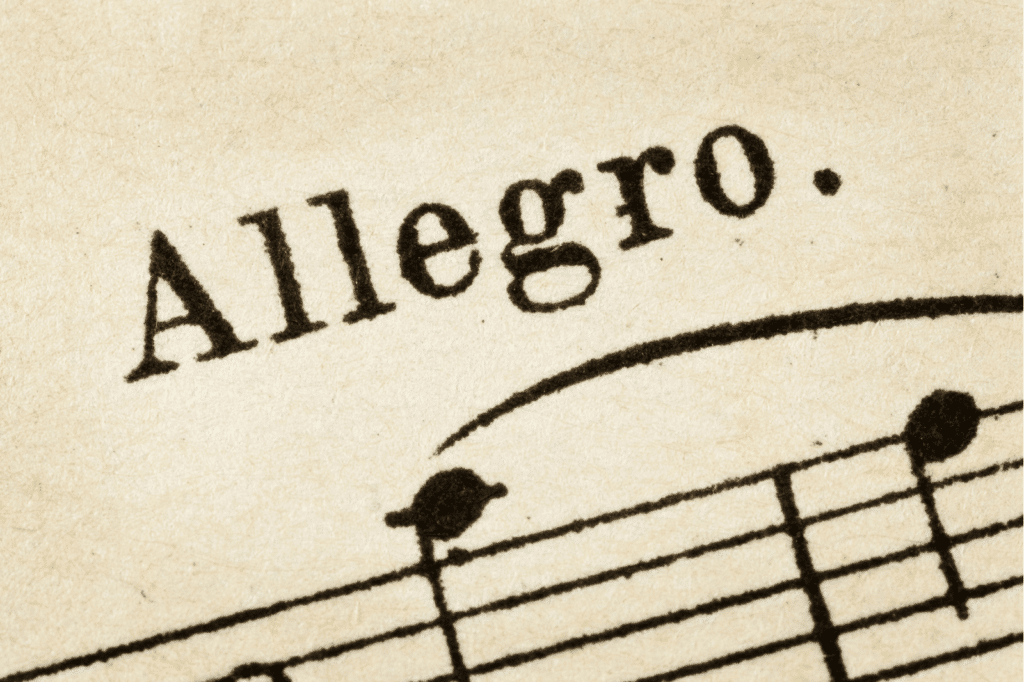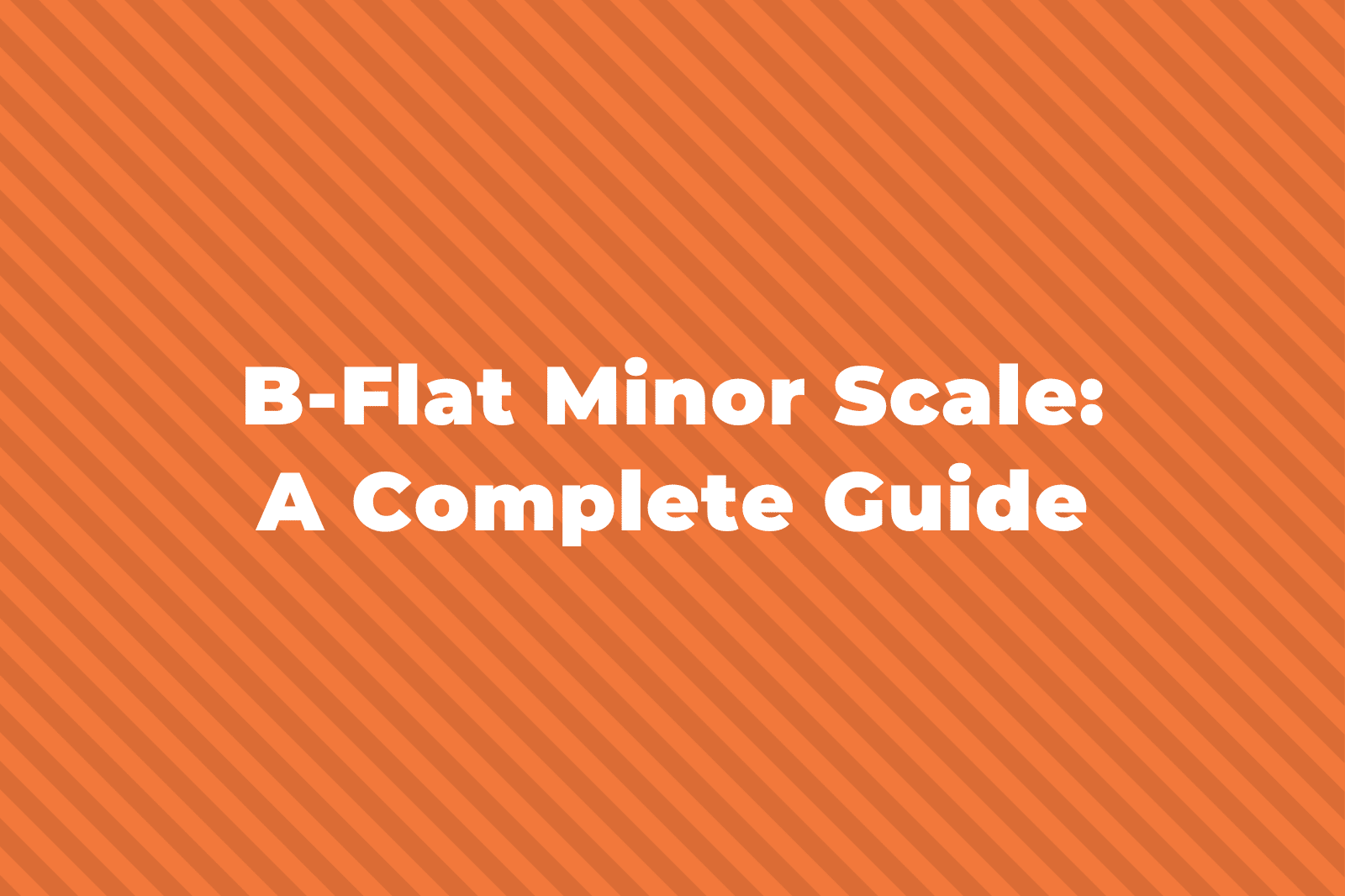Allegro is an Italian term meaning “fast, quickly, and bright.” It’s used in music to denote a tempo that is brisk and lively.
When a piece of music is marked as allegro, it should be played in a quick and lively manner, often conveying a sense of joy and spirited energy.
Other words that are often used to describe allegro are “cheerful,” “lively,” “brisk,” “spirited,” or “upbeat.”
How Fast Is Allegro?

Okay, so we know that allegro means “fast, quickly, and bright,” but exactly how fast should you play it? One person’s interpretation of quickly will be completely different from another’s.
Instead of relying solely on subjective interpretation, we can turn to a metronome to give us a more accurate idea of tempo.
Typically, the tempo for allegro falls between 120 and 168 BPM (beats per minute). While providing a general guideline, this range still allows for a degree of personal interpretation and flexibility.
Historical Context And Evolution Of Allegro
The interpretation of “allegro” has evolved significantly over various musical periods, reflecting changes in musical style, performance practice, and even the instruments used. Understanding this evolution can provide insight into how musicians approach this tempo marking today.
For example, during the Baroque era, the concept of fixed tempos was less rigid than it is today. Metronomes had not yet been invented, so allegro was more about the character of the music than a specific speed. It often suggested a lively, energetic, and spirited manner of playing.
However, the Classical era saw the development of more structured and standardized approaches to musical composition and performance. Allegro began to be more precisely defined, often associated with joy, elegance, and clarity.
It wasn’t until the invention of the metronome by Johann Maelzel in 1815, towards the end of this period, that it began to provide more specific tempo guidelines.
Related Terms To Allegro
There are a few different terms to do with allegro that you might come across.
- Allegretto: Slightly slower and often considered less serious or lighter in character than allegro.
- Allegro moderato: A moderate version of allegro, not as fast as allegro but faster than andante.
- Allegro vivace: A term combining allegro and vivace, indicating a tempo that is fast and lively.
- Allegro con brio: Translates to “fast with vigor.” It suggests a lively or spirited approach to the fast tempo.
- Allegro con fuoco: Meaning “fast with fire,” it implies a passionate or fiery performance at a fast pace.
- Allegro assai: Essentially means “very fast,” indicating a faster interpretation of Allegro.
- Allegro ma non troppo: Means “fast but not too much.” It suggests a brisk pace but with restraint.
- Allegro non tanto: Similar to allegro ma non troppo, it means “fast, but not so much.”
- Allegro molto: Indicates a very fast tempo, faster than the standard allegro.
Examples Of Pieces Marked Allegro
To get an idea of how it sounds, here are a few different examples of pieces of music written with allegro tempo markings.



